Fresh water is essential to livestock health—but how do you keep livestock water from freezing during cold winters? Here are 7 great solutions from our Community!
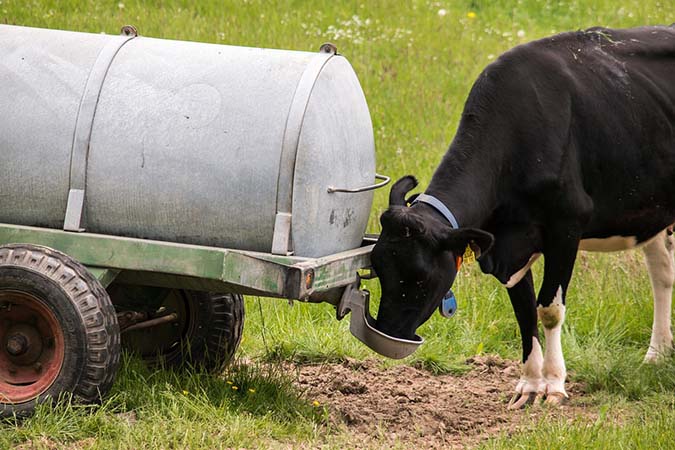
Winter. It’s that time of year when the livestock water freezes! Really, is there anything worse?
Members of The Grow Network Community, Jeff and Tracy, wrote to me looking for suggestions about how they can keep livestock water from freezing. And as always, our community provided quality advice—everything from tried-and-true products to creative brainstorming! Below is a sampling of some of the amazing responses The Grow Network received. (And be sure to check out the comments for some more great ideas!)
7 Ways to Prevent Livestock Water From Freezing
#1—Cow Balls, wait … what?
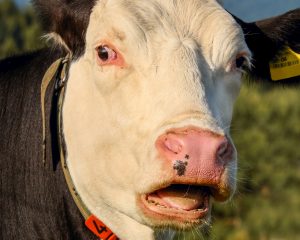
Heidi knows of one solution that has worked well for her in the past—cow balls. That’s right: cow balls! They are large plastic balls that are used to cover the surface of the water tank. The balls decrease the amount of water on the surface that is exposed to the external cold temperatures. When ice does form, cows are able to break through the ice by pressing down on the balls with their noses. Genius!
#2—Insulated Plastic Bucket Holders
Patrick says that he has had success using insulated plastic bucket holders. These plastic holders are fastened to the wall and have an opening on the top that is the right size for a plastic 5-gallon bucket. Some of them even come with a food-grade 5-gallon bucket!
You May Also Enjoy:
“22 Tips to Help You to Stay Warm Outside in Winter”
“Cold-Weather Chicken Care: 11 Quick Ideas to Improve Chicken Comfort”
Foam insulation helps to keep the water from freezing! Patrick likes this solution, but he said that he does have some trouble when temperatures get very cold—below about 15F. When temperatures get below 15F, he said that he then resorts to using a submersible electric warmer.
#3—Fish Tank Heater
Lyn wrote in and suggested that using a fish-tank heater in the bottom of a livestock tank might work. She suggested using solar power, if possible, and also pointed out that cattle can be destructive, so it would be important to make sure that any cables are either buried or placed inside metal conduit and anchored to a 4″ x 4″ post. What a clever suggestion!
#4—Creating Movement
DJ suggested that creating movement in the watering system would be a good way to prevent freezing. Basically, the idea is to copy nature and create a simulated brook. This idea should work in areas where the nighttime lows aren’t too terribly cold.
You May Also Enjoy:
“40+ Natural Cold and Flu Remedies”
“DIY Hoop House: The Easy Greenhouse Alternative”
“Top 5 Things to Consider When Building (or Buying) a Greenhouse”
A small pump could also be used, or perhaps a simple water wheel device. There are a few products available online that do this, like the one below. You can also find these products available from any farm supply stores, like Tractor Supply. Usually, they are sold under the title of “water circulators.”
Protecting Smaller Water Troughs Using Innovation
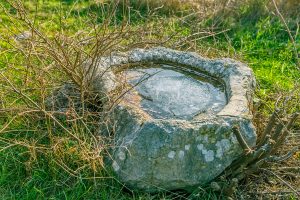
Below are a few great ideas from the community that seem like good solutions for those of you trying to protect smaller watering troughs. Let’s take a closer look:
#5—A Tire
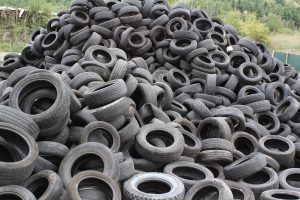
Gerry knows of a tried-and-true trick that works to keep water thawed out in a 5-gallon bucket. Find an old tire that fits securely around the bucket, and fill the inside of the tire with rocks. Then, place the bucket inside the tire. Voilà!
Leave the tire and bucket outside in the sun so that they are able to warm up all afternoon. The black of the tire will absorb warmth from the sunshine and the rocks will help to retain some of that warmth. When night falls, the warmth of the tire and rocks will help to keep the water from icing over, and it should remain thawed until morning. Awesome idea, Gerry!
#6—Olive Oil
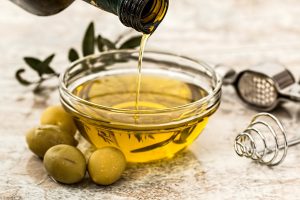
Lyn had an idea to experiment with—and she admits that while she hasn’t tried this yet, she is certain that the olive oil could work to protect a small watering trough from freezing.
Since the olive oil will not freeze, pouring a thin layer on top of the water’s surface could help to protect the water from developing a layer of ice. Olive oil should be safe for the cattle, and it just might be an inexpensive and simple solution!
#7—Pure Innovation: Thinking Outside the Box!
Last but not least, DJ has an experimental idea that may help a small water trough. His idea is to submerge some sort of a grid into the water—preferably something with a handle attached so that this device can be easily moved around to break up any ice near the top.
You May Also Enjoy:
“Elderberry: Natural Remedy for Colds, the Flu, Inflammation … Even Cancer!”
“Growing Spinach: Pack a Punch in a Little Bunch”
“7 Ways to Use Pine Trees for Food and Medicine, Year-round”
This idea, of course, would have to be done as the ice forms. DJ pictures something like an old ice cube tray or perhaps using black plastic to create a waffle grid. This sounds like an interesting idea … and I think it just might work! Might be a million dollar product for any of you aspiring inventors out there!
What Do You Think?
Well, I know there are a lot of other ways to prevent livestock watering systems from freezing that we did not cover here. But, please feel free to leave a comment and let us know of your favorite product or a tried-and-true method you use to prevent your livestock water from freezing!
__________________
The Grow Network is a participant in the Amazon Services LLC Associates Program, an affiliate program designed to provide a means for our team to earn fees for recommending our favorite products! We may earn a small commission, at no additional cost to you, should you purchase an item after clicking one of our links. Thanks for supporting TGN!
Marjory Wildcraft is the founder of The Grow Network, which is a community of people focused on modern self-sufficient living. She has been featured by National Geographic as an expert in off-grid living, she hosted the Mother Earth News Online Homesteading Summit, and she is listed in Who’s Who in America for having inspired hundreds of thousands of backyard gardens. Marjory was the focus of an article that won Reuter’s Food Sustainability Media Award, and she recently authored The Grow System: The Essential Guide to Modern Self-Sufficient Living—From Growing Food to Making Medicine.
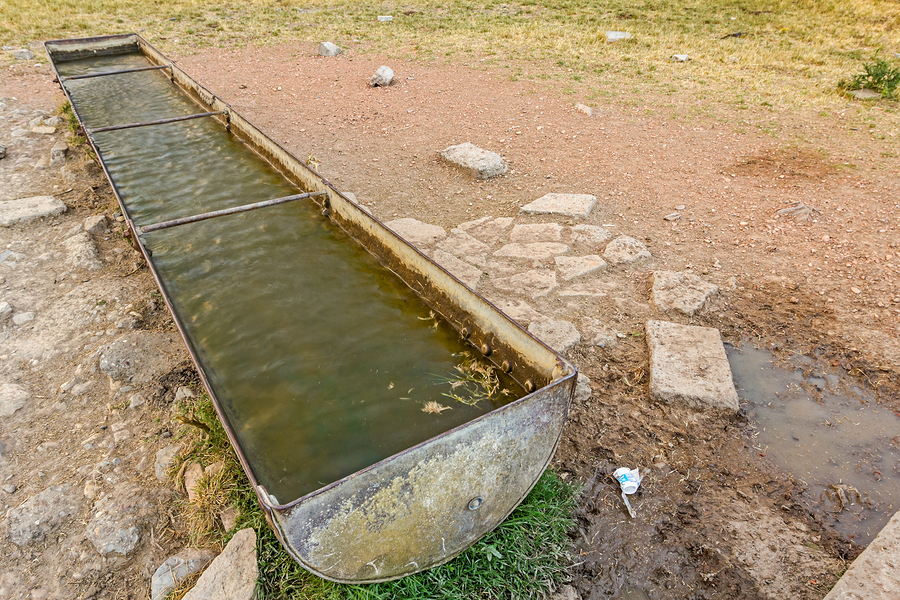
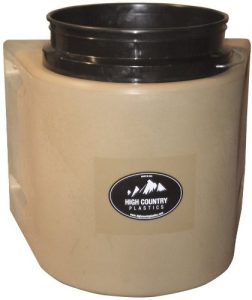
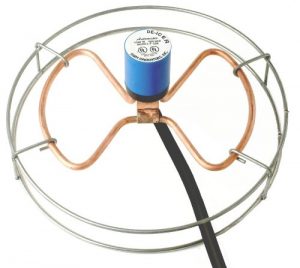







COMMENTS(4)
I have a chicken waterer made out of a 5 gallon bucket from the bakery with chicken nipples in the bottom. To keep it from freezing, I have heat tape (designed to keep pipes from freezing) wrapped around it, secured by duck tape.
Here’s another way to help prevent water freezing in a trough. From 6 feet underground and below temperatures stay in the 50 F to 60 F zone year round, depending on location. Dig down and put a coil of 1000 ft irrigation tubing and a small solar powered pump to circulate water down to the warmth and back to the trough.
I bought hydraulic waterers for five different pens. They have containers that hold the water source about 4 feet high, they circulate the water, and they heat it too I think. Have to keep them clean. Cost $8,000 in 1996.
When I have a sick animal in a wooden ‘house,’ I go out there every few hours and put hot rocks in their milk or water. I heat the rocks in the oven.
The best way we’d found that is affordable is using a floating (not submersible) water trough heater. We have to have water for our cows in the deep cold of the Canadian prairie winter. Large cattle producers will use a more costly set up, a special heated cattle waterer, to keep their water from freezing.